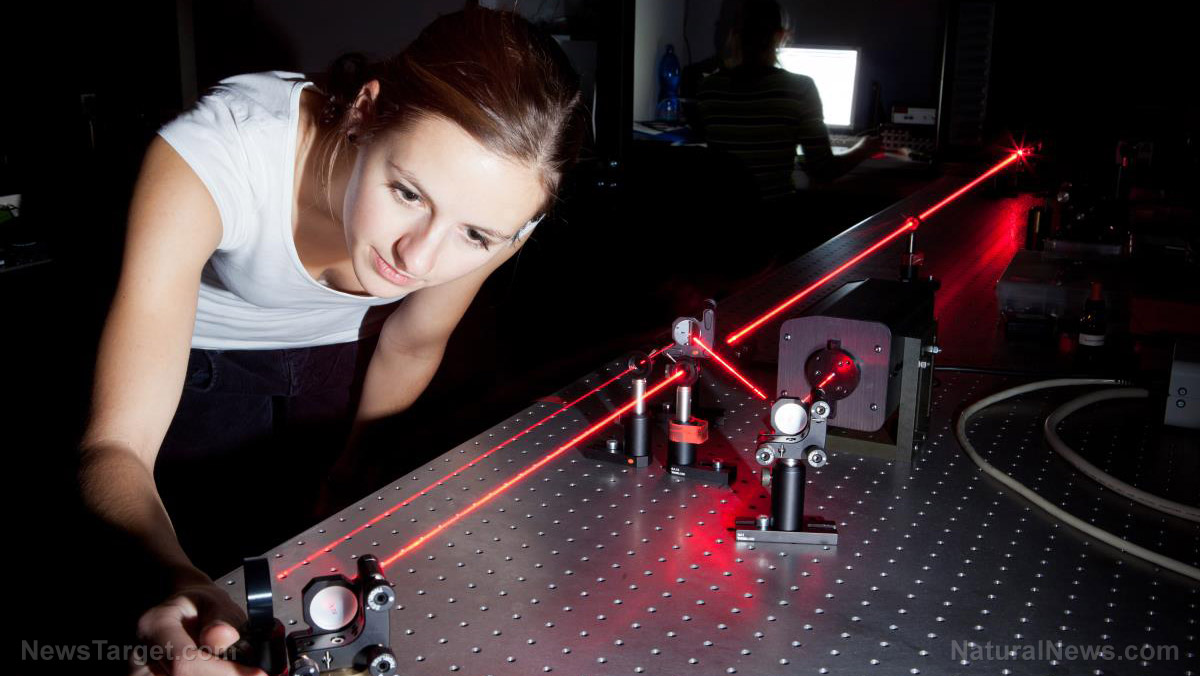Researchers develop a pillow with an embedded noise-canceling system that can help people with snoring partners sleep better
05/19/2019 / By Edsel Cook

The newest design for a noise-canceling system can fit inside a pillow of a person who has to share their bed with someone who snores in their sleep. By placing it closer to the head of a person, it can efficiently cancel out loud snoring noises that can ruin sleep.
A sound with a noise level of at least 35 decibels (dB) can affect the length and quality of a person’s sleep. In turn, sleep deprivation and poor sleep affect people’s behavior.
The noise levels of moderately loud snoring can range from 50 dB to 60 dB, around the same range as an indoor conversation. The loudest snore on record is 116 dB, which is as loud as a live rock concert.
With this in mind, researchers from Northern Illinois University (NIU) presented a noise-canceling system that can adapt itself to the individual breathing patterns of a snorer. Their device is the first one that fits inside a pillow instead of on the headboard. They published their findings in the Journal of Automatica Sinica. (Related: Separating fact from fiction: Sleep expert debunks popular sleep myths.)
The new noise-canceling system fits inside the pillow of a snorer’s partner
A noise canceler generates a sound wave with the same amplitude and the opposite phase of the target wave. It analyzes the initial sound, eliminates audio errors that take the form of residual noise, and then releases antinoise that can disrupt the target sound wave.
Most noise-canceling devices fit on the headboard of a bed. But NIU researcher Lichuan Liu warned that the distance between these devices and the source of snoring hampers their effectiveness.
“The quiet zone is centered…away from the ears of the snorer’s bed partner, resulting in less noise reduction around the ears of the snorer’s bed partner,” Liu explained. “Moreover, a headboard is heavy, bulky, and not portable.”
Her team found a way to embed their new device in the pillow of the partner. Their noise canceler features an adaptive filter that can capture different input signals. A dedicated reference microphone detects the snoring sounds, while a pair of error microphones pick up residual noise that will otherwise cause errors.
The noise canceler uses these inputs to create the right antinoise signal. A pair of speakers inside the pillow of the snorer’s partner emits the antinoise sound wave.
A pillow-embedded noise canceler outperforms headrest-mounted devices
The NIU noise-canceling device also improves on the least mean square (LMS) algorithms used by its predecessors. Its adaptive LMS can fine-tune the antinoise signal to match the length of individual snores. It can handle the minute changes in the acoustic characteristics of each snore.
“Since each snorer’s snore signals have their unique time-frequency characteristics, it is essential to design an adaptive LMS algorithm for the best cancellation performance for different snore signals,” Liu remarked.
Her team tested their pillow-embedded noise canceler alongside conventional equivalents. They set up a noise-sensing dummy, played audio recordings of snoring, and evaluated the noise detected by both ears.
Headboard-mounted noise-canceling systems reduced the noise levels by 22 dB in the right ear of the dummy and 21 dB in the left ear. Meanwhile, the pillow-embedded NIU system brought down noise levels by 31 dB and 30 dB.
Liu and her team also compared the performance of their adaptive LMS algorithm with non-adaptive algorithms. Their results showed that the older algorithms reduced noise levels by 19 dB on the left side and 20 dB on the right side, while their new adaptive system achieved 19 dB and 20 dB of noise reduction.
Their next step is creating machine learning techniques that can spot symptoms of sleep disorders. Improved algorithms will increase the accuracy of screening and monitoring processes for snorers.
Sources include:
Tagged Under: algorithms, breakthrough, devices, gadgets, goodtech, innovation, inventions, noise canceler, noise canceling, pillow, sleep, sleep aid, sleep deprivation, sleeping habits, snoring, technology
RECENT NEWS & ARTICLES
COPYRIGHT © 2017 MEDICALTECH.NEWS



















